The Curiosity Cabinet: Inaugural Collection
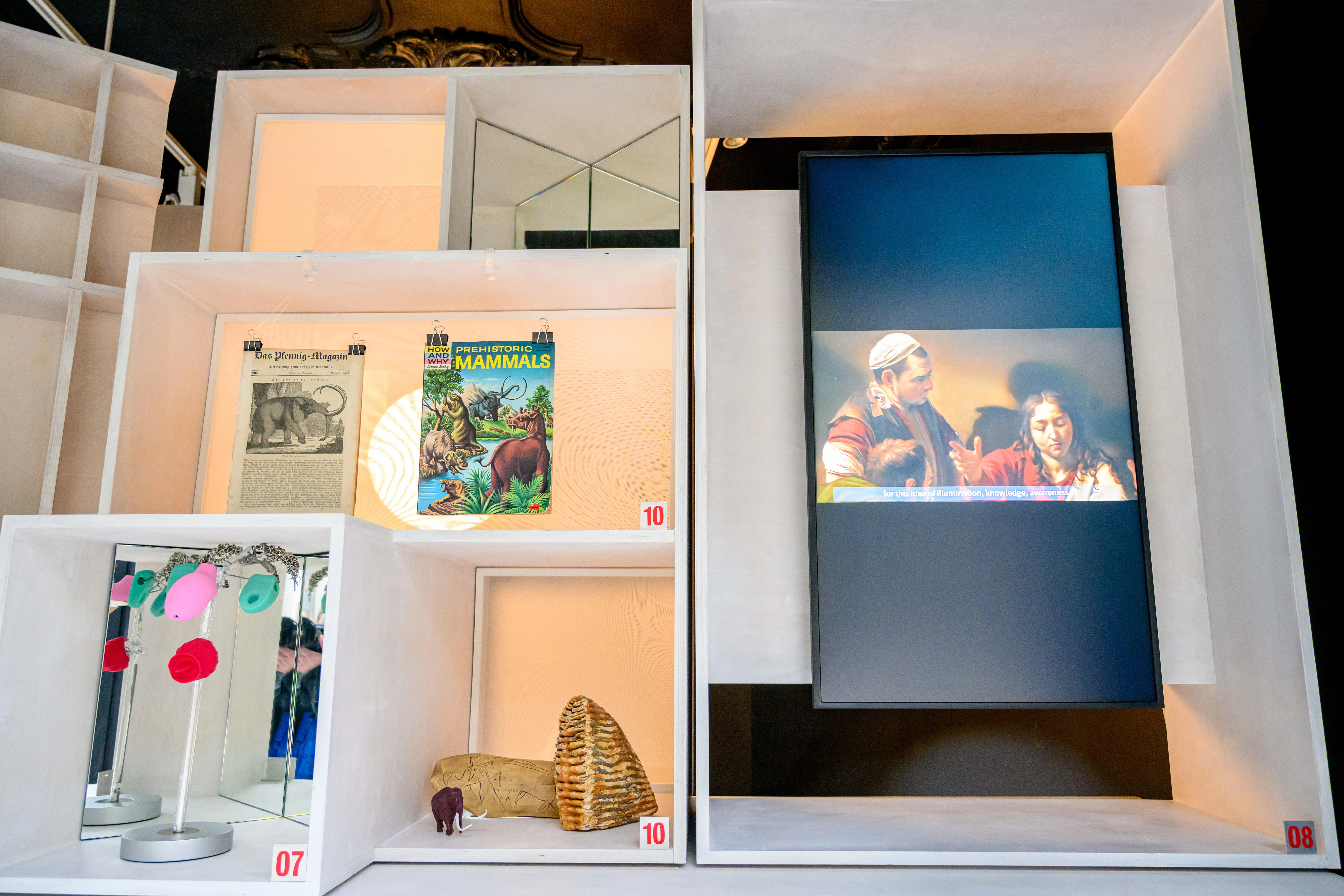
The Curiosity Cabinet at 171 Strand is dedicated to the curious – curious people and curious objects. Our aim is to tell the story of some extraordinary research being done by King's staff and students using the physical and digital objects that have inspired or emerged from it. The Curiosity Cabinet is brought to you by the Faculty of Arts & Humanities supported by King’s Culture.
Explore the archived artefacts
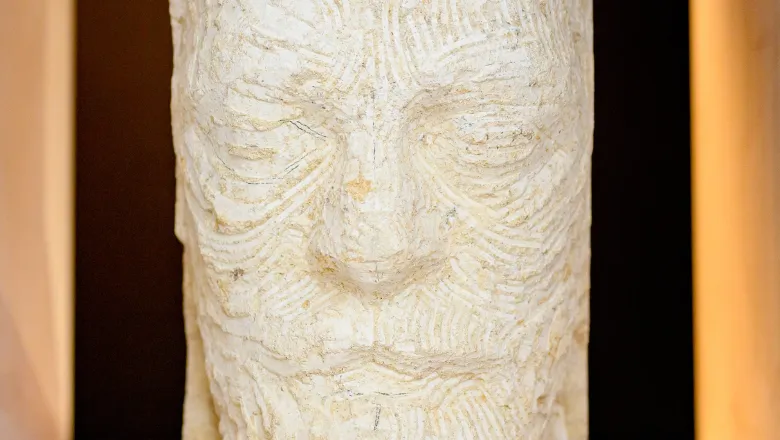
A Carved Head
This limestone head was carved by Andrew Tanser and Paul Jakemen as part the Art of Making in Antiquity project (2011-2013) run by Dr Will Wootton:
'We were digitizing the photographic archive of the artist Peter Rockwell and undertaking new research on the techniques used by stoneworkers in the Roman Imperial period. At the same time, we worked with contemporary carvers, documenting their working practices.
An event was organised at King’s in autumn 2011, during which Andrew and Paul did a carving demonstration, working together on this head. In addition members of the public were invited to carve a limestone block themselves and join a series of talks about stoneworking from antiquity to the present.'
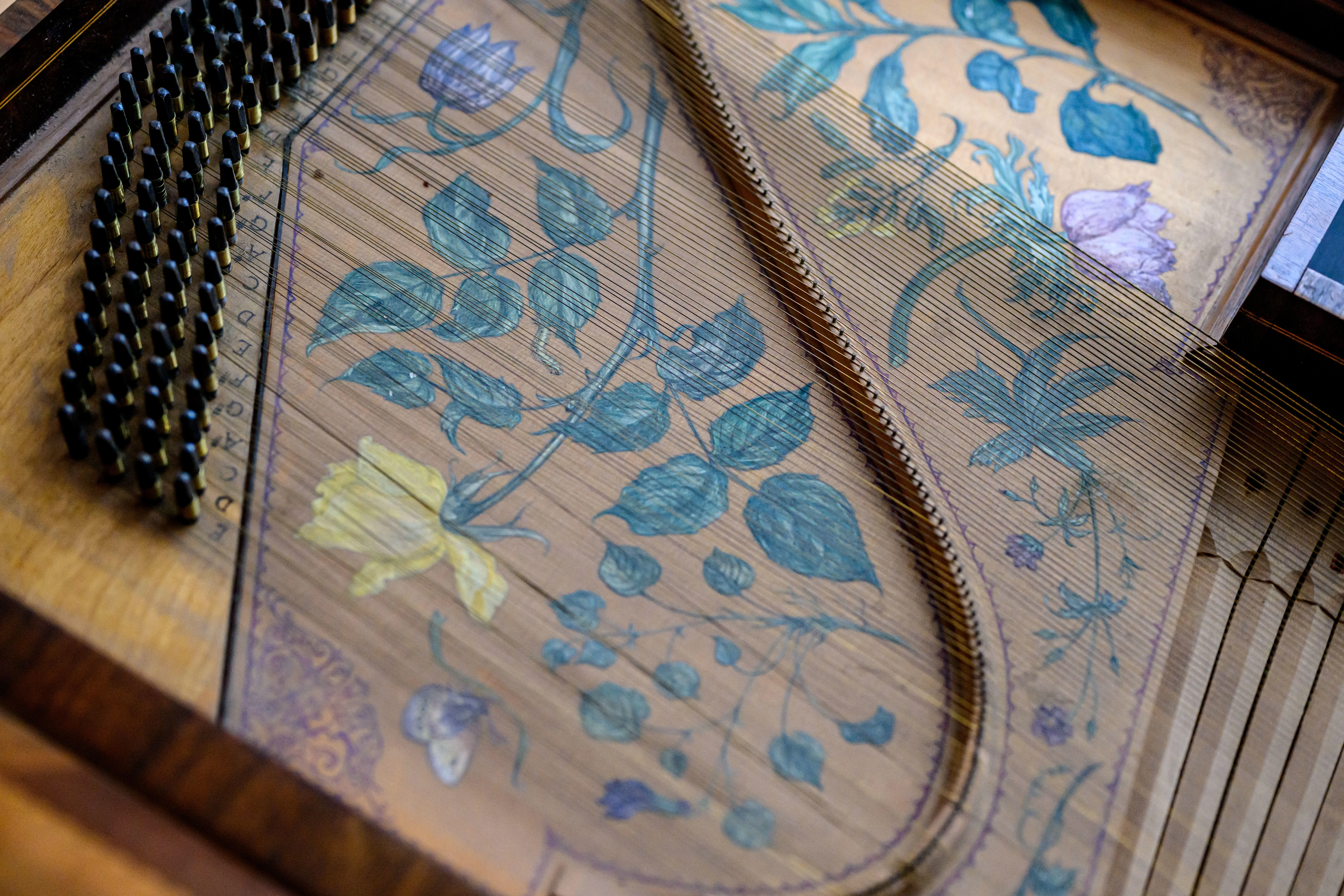
Clavichord
The clavichord is a keyboard instrument developed in fourteenth-century Europe and which gained popular usage mostly in German-speaking lands, a popularity that would endure well into the nineteenth century.
Owing to its rectangular shape and small sound board, it makes a quieter sound than the harpsichord or piano. As one of these clavichords demonstrates, it is common for the sound boards to be ornately decorated.
The clavichord is the earliest known example of a key-hammered string instrument, the same mechanism that produces sound in modern pianos. The first clavichords had fretted strings, allowing one key to produce multiple pitches. The clavichords on display here are unfretted, meaning each key produces a single pitch. The unfretted clavichord only came into being in the seventeenth century, as it lent itself more easily to the ornamented playing style typical of the Baroque period.
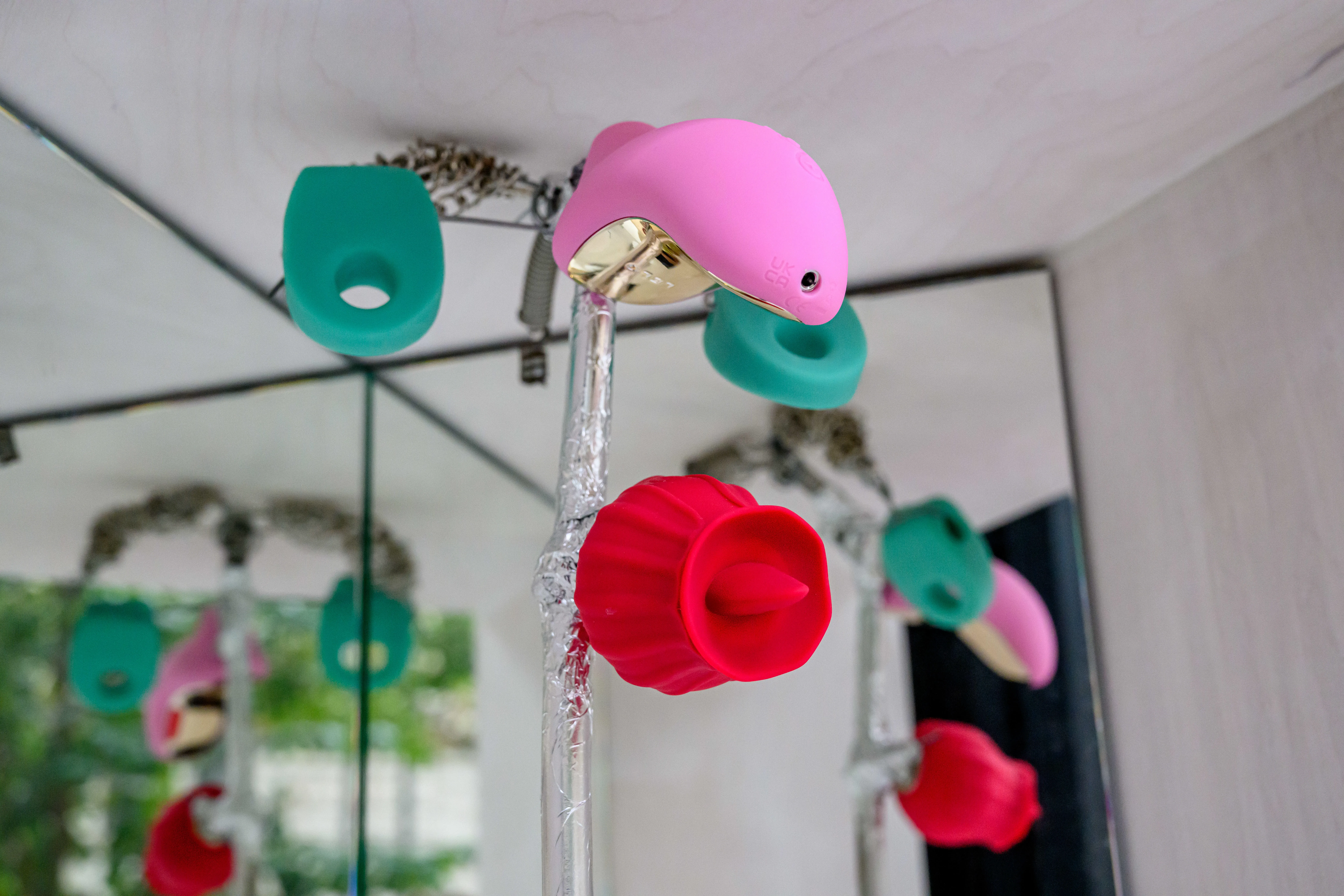
Do you need some body to love?
Dr Kate Devlin’s research explores technology and intimacy. Dubious about tabloid headlines proclaiming that sex robots were coming to replace human-human relationships, Kate spent several years exploring why and how we might want to create an artificial companion. Her book, Turned On: Science, Sex and Robots, published in 2018, took a close look at sex tech from 28,000 years ago to the present day, and an even closer look at the things that make us human, like love, care and desire, as well as related issues such as gender politics, diversity, surveillance and violence. Any study of our interactions with technology is really a study of ourselves.
Kate’s sculpture – Do you need some body to love? – is a face made from commercially-available sex toys. We find it easier to relate to objects with human-like features, but this might not always be necessary: with AI, we can emulate convincing human conversation, and right now there are thousands upon thousands of people who are finding emotional – and erotic – closeness with chatbots. Having just been through a pandemic where our relationships with humans were conducted via a screen, might our next relationships be with the screen itself?

Dulcimer
Dulcimers denote a broad family of string instruments that exist in different forms in many musical traditions around the world, such as the salterio (Europe), santur (Persia), and yangqin (China).
The British dulcimer such as the one displayed here is trapezoid in shape. This style of dulcimer originated in the Renaissance period (c. 15th Century) and returned to prominence during the folk revival movements of the early twentieth century. The trapezoid shape reflects the different length of the strings, where shorter strings produce a higher-sounding pitch and longer strings produce a lower-sounding pitch.
Often, the strings are arranged in groups of three-to-six that may be bowed, hammered, or plucked.
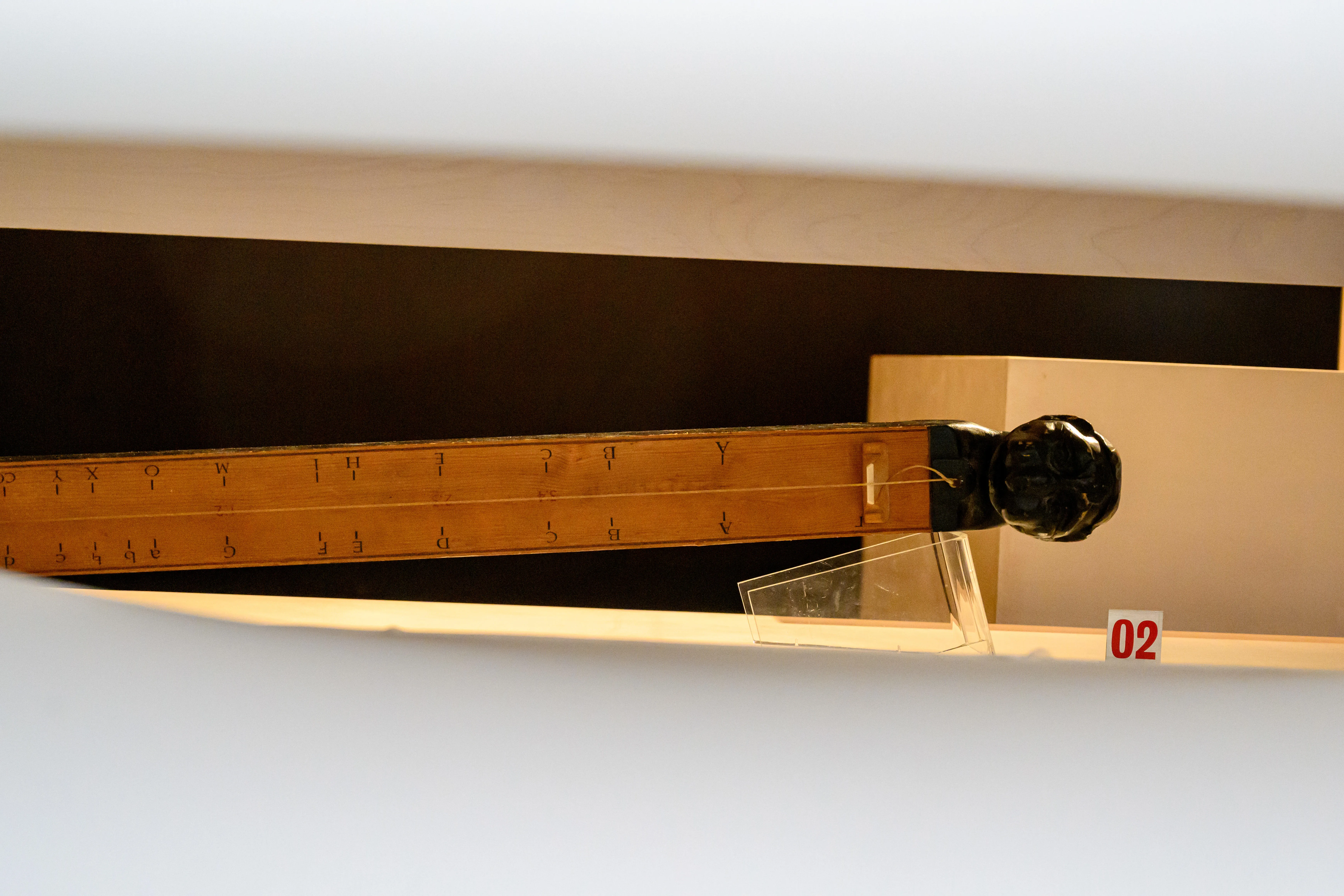
Monochord
A monochord is any instrument with only one string stretched across a sound box or resonator table. Single-stringed instruments are archaic, the Ancient Greeks having used them for tuning purposes. In medieval Europe, these tuning monochords developed moving bridges, allowing for a more vivid depiction of the relationship between different pitches.
In the modern day, the term monochord often refers to “laboratory instruments”, so-called because they continue to be used to illustrate the mathematical and acoustical properties of musical pitch. The one displayed here bears a mysterious history, having one day been discovered in the music department’s staff room. Its original owner remains unknown.
The sculpted bust atop the body of the instrument is an example of in what ways musical instruments can constitute visual as well as auditory works of art in their own right.
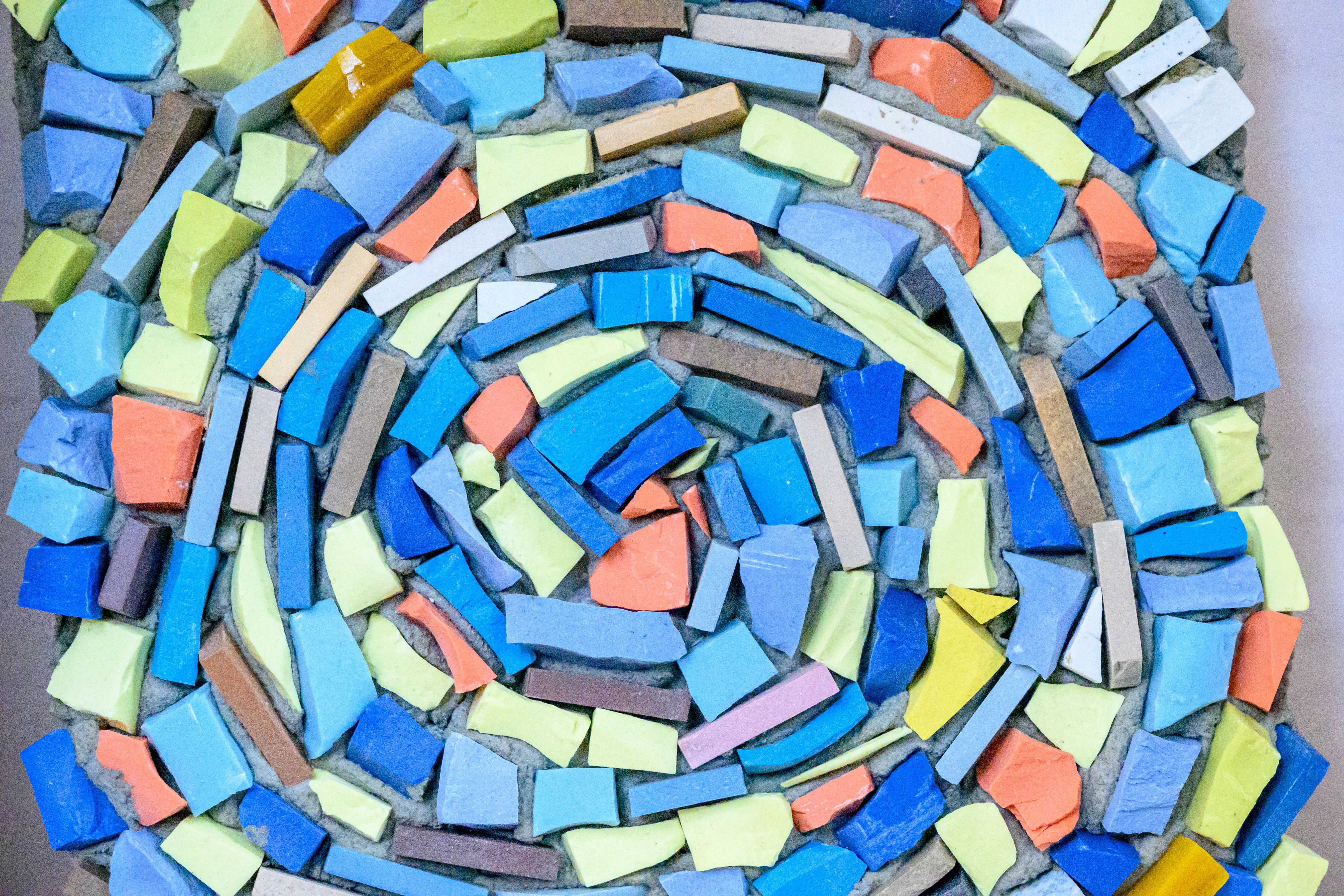
Mosaic Samples
These mosaics were made during a series of mosaic masterclasses, led by Dr Will Wootton, which took place in 2017, 2019 and 2022.
This was a collaboration between King’s and a group of professional mosaicists, exploring the intersection between ancient and modern techniques, sharing knowledge and improving skills.
We made a series of mosaics of different sizes and in different materials, offering places to anyone who was interested, whether artist, academic or student. These small mosaics were made using a range of stone, ceramic and glass tesserae laid into mortar beds some comprising lime and others modern cements.
The events culminated in the installation of a large mosaic in a replica Roman villa at Butser Ancient Farm during the summer of 2022.
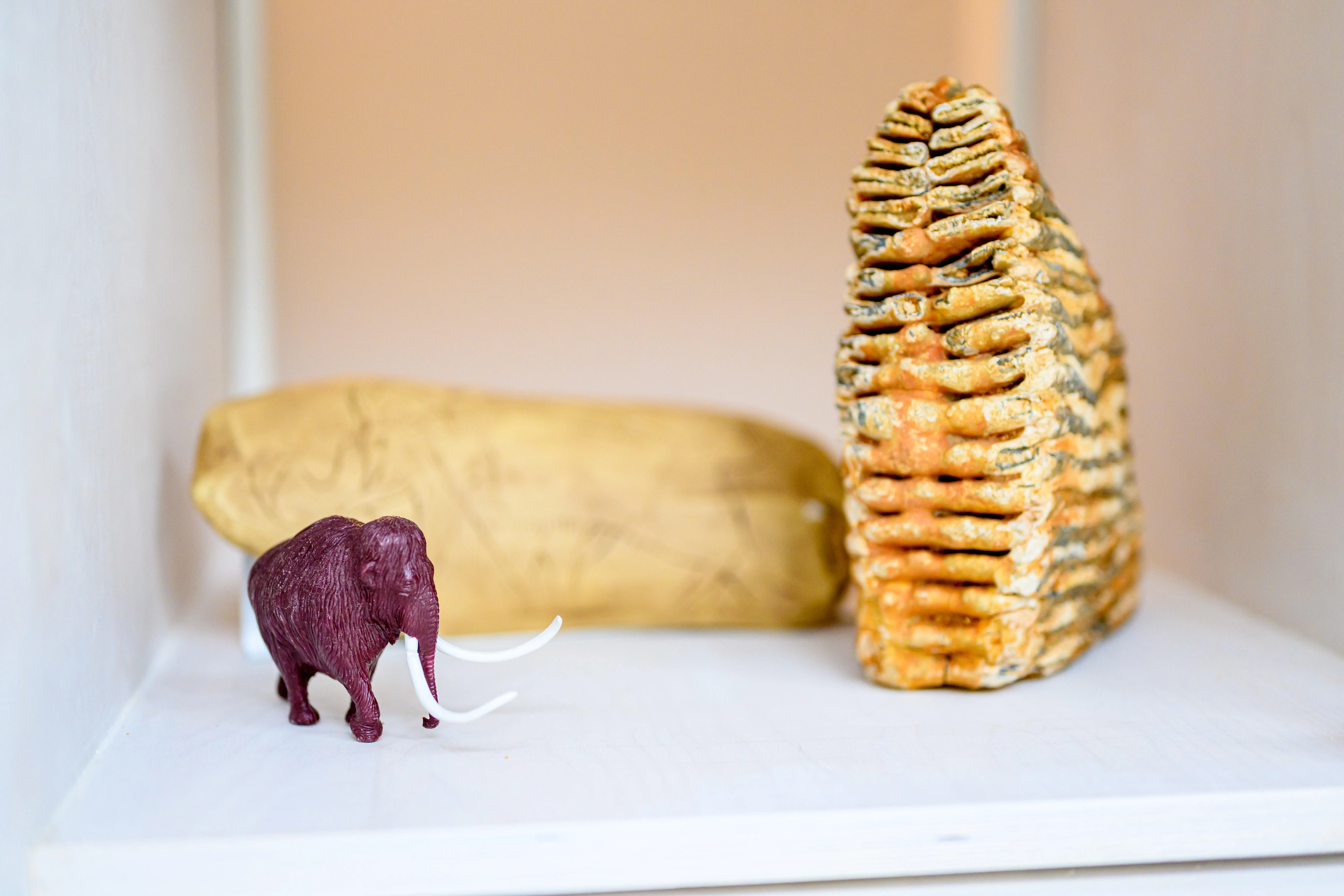
Palaeontology Objects
How have humans interacted with and understood extinct animals? This is a question which motivates a large amount of Dr. Chris Manias’ work, which examines the history and cultural role of palaeontology and related subjects, most notably through his recent book, The Age of Mammals: Nature, Development and Paleontology in the Long Nineteenth Century (University of Pittsburgh Press, 2023) and through the Popularizing Palaeontology: Current and Historical Perspectives research network (active since 2016)
Here are some objects related to how people have engaged with one of the most iconic fossil animals – the woolly mammoth – in a variety of different periods. These include:
- A mammoth molar tooth
- Woolly mammoth model, produced by Invicta (1975)
- A plaster reproduction of the “Mammoth of La Madeleine,” a Palaeolithic carving on mammoth ivory dating to around 14,000 years ago. The original object was excavated in France in 1864 and was crucial for documenting that humans lived alongside these animals
- An article on “Animals of the Primeval World” from Das Pfennig-Magazin, 25 May 1837, featuring an early reconstruction of a mammoth
- Martin Keen, The How and Why Wonder Book of Prehistoric Mammals (1968), in which mammoths feature prominently o Woolly mammoth model, produced by Invicta for the London Natural History Museum (1975)
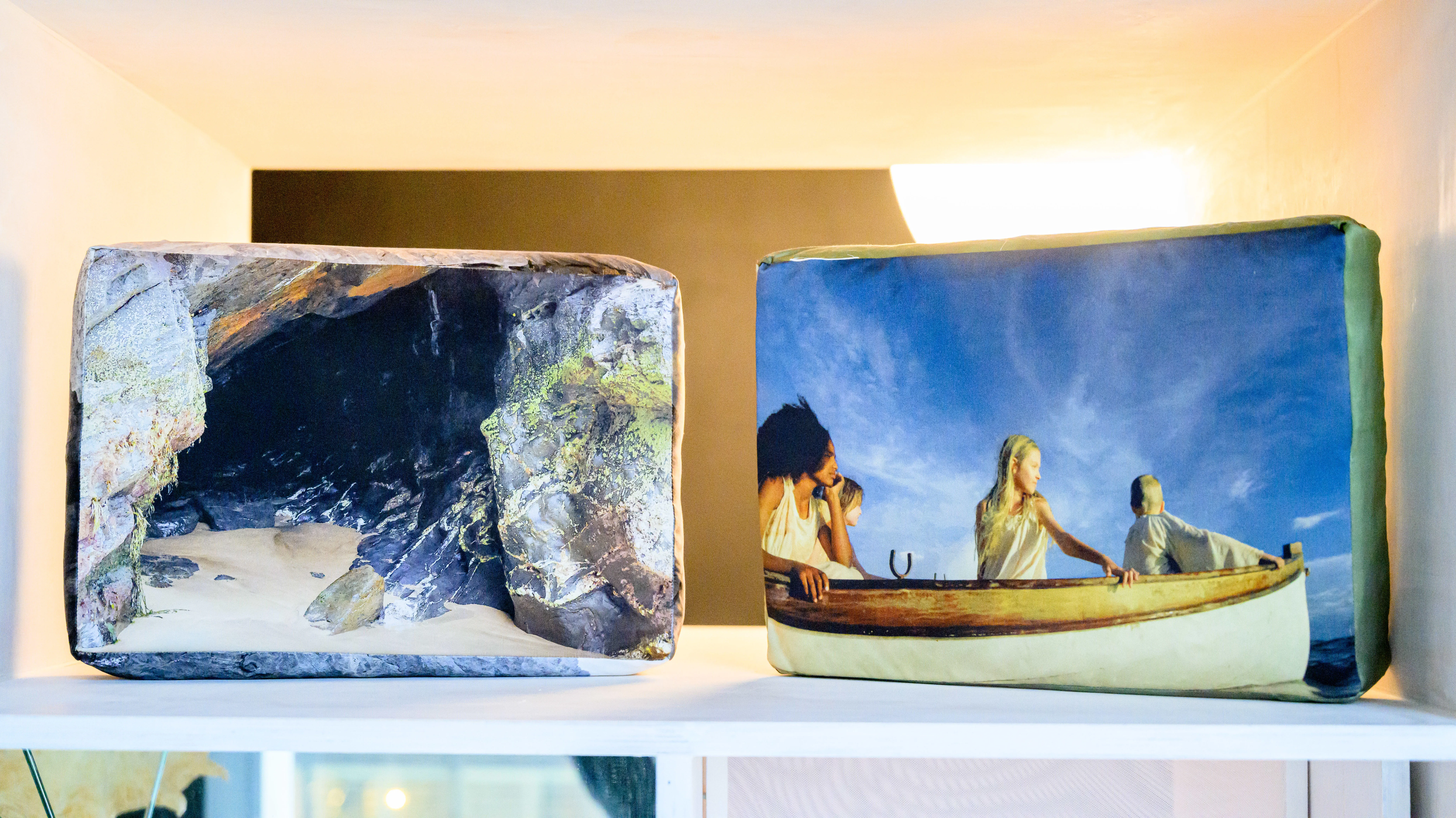
Prayer Cushions, Never at Sea
Anchor Latin (ancorare – to fix or secure in a particular place)
“St Mary’s, ‘the Jewel in the Strand’, is an island church, a quiet sanctuary, a haven. Located until very recently on a traffic island, bodies and vehicles flowed around it amongst the thrust and charge of Westminster. It has been built, pulled down and resurrected over centuries. This building-boat, here on the Strand, is a vessel. It is a secure place in a sea of change. Its foundations, both material and mythic, are an anchor planted deep into the sea bed, one that stabilizes a vessel on a slippery horizon, where squalling winds churn the water. But what is this anchor-foundation, and who does it stabilise? Who finds their mooring amongst Westminster’s sites of power and prestige? Efforts are directed to sustaining and restoring the building-boat to its former glories. It stands as a monument to our myth histories, but even stone is made liquid as it weathers and erodes.”
Excerpt from the essay by Dr Kate Pickering
Never at Sea was an exhibition by Dr Kate McMillan, a London-based artist and Senior Lecturer in Creative Practice at the Department for Culture, Media and Creative Industries at King’s College London, located at St Mary le Strand Church in June 2023. The exhibition was developed in response to a series of arts-based workshops for women who have experienced forced migration, ran by Dr McMillan in collaboration with the Refugee Council, Lewisham Refugee Resettlement Project and King’s Sanctuary Programme. The project will be brought to life by a performance developed in collaboration with composer Professor Cat Hope and choreographer Sivan Rubinstein, featuring percussionist Louise Devenish, vocalist Macia Lemke-Kern and dancer Lydia Walker. The exhibition will be concluded by a symposium featuring socially engaged artists and organisations using creative practice to make a difference in their communities.
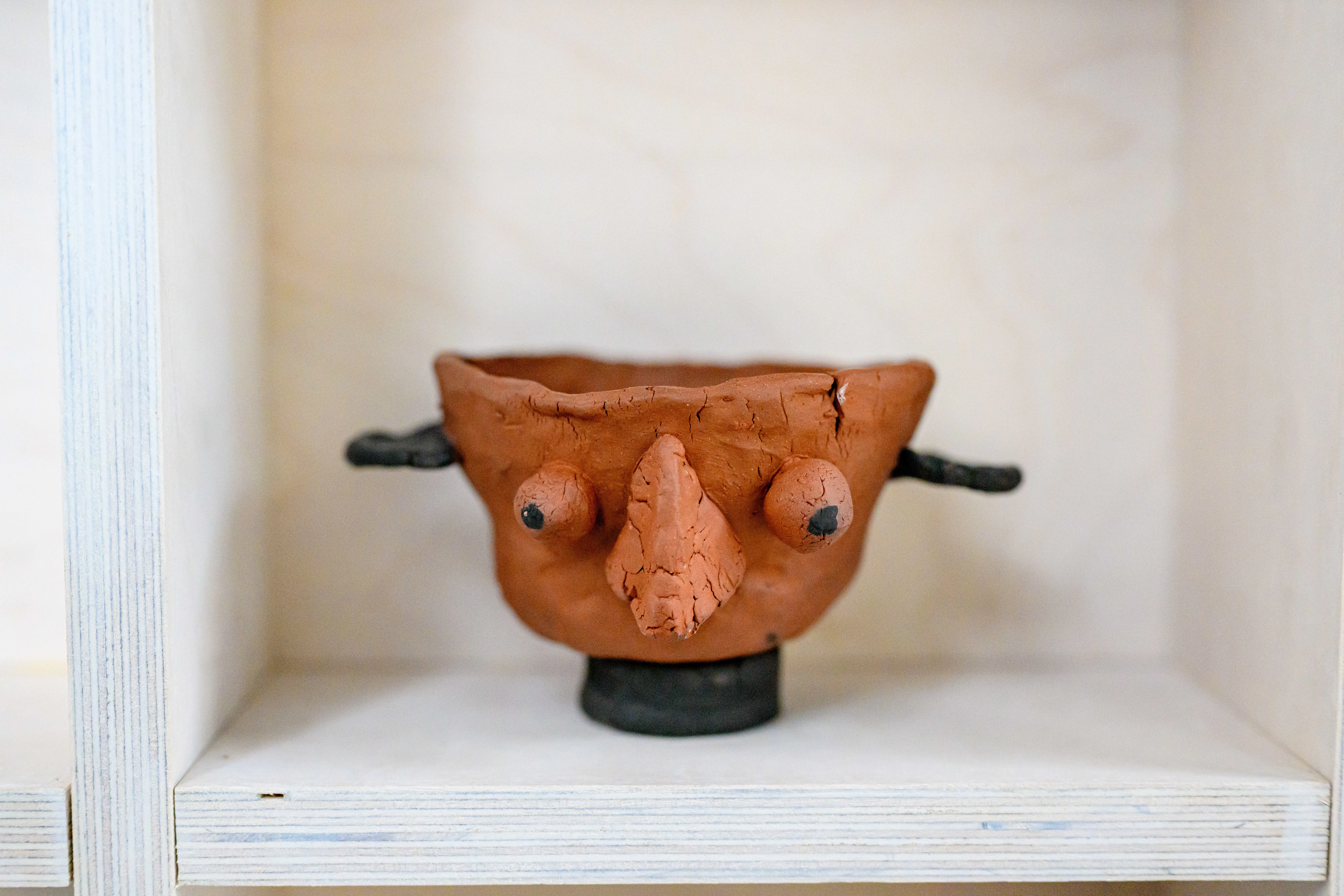
Students' Pots
These clay pots were made by second- and third-year undergraduate students in the Classics Department during a module called The Art of Making in Antiquity convened by Dr Will Wootton.
The course was created as a result of the Art of Making in Antiquity project (2011-2013) with the intention of engaging students in recent research. The course explores the materials and methods used to produce a range of crafts in the Classical world, and examines how social and economic histories of ancient craftspeople are written using the archaeological evidence.
Students are given the opportunity to meet artists, visit their studios, and make objects themselves in order to appreciate better the processes involved while also engaging critically with how we understand and reconstruct the past.
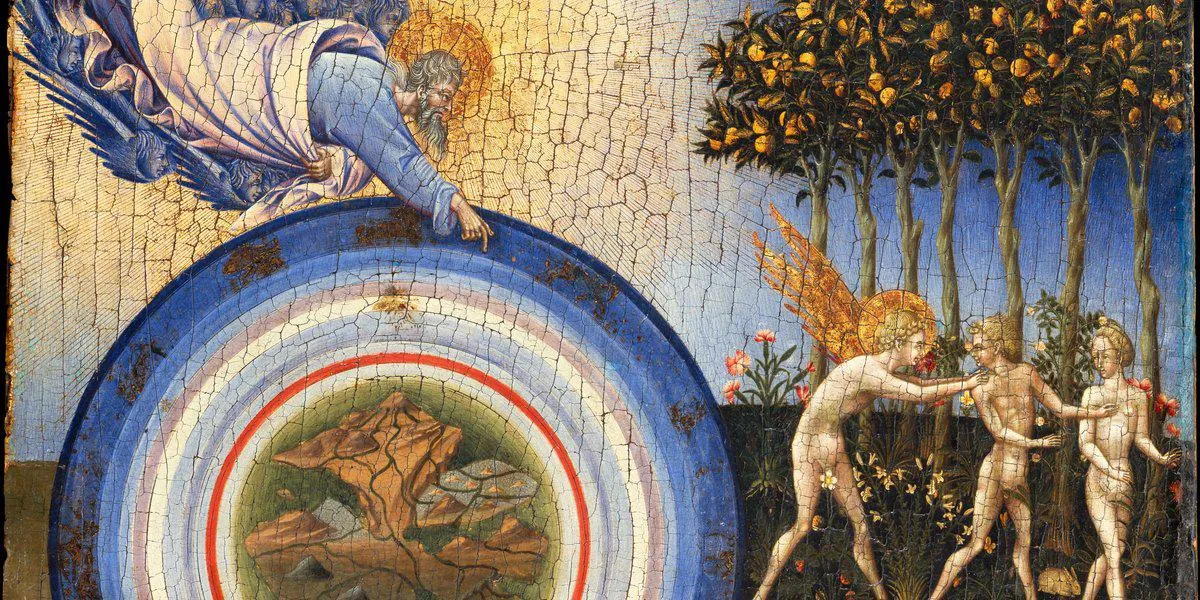
The Visual Commentary on Scripture
The Visual Commentary on Scripture (theVCS.org) is an open-access online publication that provides theological commentary on the Bible in dialogue with works of art. It helps its users to (re)discover the Bible in new ways through the illuminating interaction of artworks, scriptural texts, and commissioned commentaries.
The VCS is interdisciplinary, featuring the work of scholars working in the fields of theology, art history, and biblical studies. These contributors create digital exhibitions comprising a biblical passage, three art works, and associated commentaries. To date, theVCS.org features over 1000 high resolution images with interactive zoom function.
The digital exhibitions of theVCS.org aim to open new dialogues between image and text so that the Bible and the selected works of art come alive in new and vivid ways.
On the website, you can find over 350 digital exhibitions exploring the Old Testament/Hebrew Bible, Apocrypha, and New Testament. Many of these feature audio, and all feature high resolution images with an interactive zoom function. The VCS has also produced several film series, including Creative Conversations which feature leading figures in the art world, and Unlocking Christian Art, made in partnership with the Staatliche Museen zu Berlin.
The VCS is part of the Curiosity Cabinet project.
Image credit: Giovanni di Paolo , The Creation of the World and the Expulsion from Paradise, 1445, The Metropolitan Museum of Art, New York.
